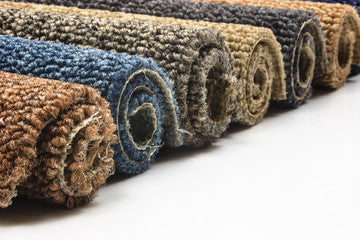The Health Benefits of Handmade Rugs: A Comprehensive Exploration
Handmade rugs have been cherished for centuries as artful expressions of culture, heritage, and craftsmanship. Beyond their aesthetic appeal, these exquisite floor coverings offer an array of health benefits that contribute to improved indoor environments and overall well-being. In this article, we delve into the numerous health advantages of handmade rugs and explore how they enhance indoor air quality, allergen control, comfort, and safety.
Section 1: Handmade Rugs and Indoor Air Quality
1.1 Trapping Airborne Particulates
Handmade rugs act as passive air filters, capturing and retaining airborne particles, such as dust, allergens, and pollutants. The fibers of these rugs efficiently trap these particles, preventing them from circulating in the air and reducing respiratory irritation.
1.2 Improving indoor air quality
Studies have demonstrated that properly maintained handmade rugs can significantly contribute to improved indoor air quality by reducing the concentration of airborne allergens and pollutants (Cox et al., 2012). Regular vacuuming and professional cleaning are essential to maximize this benefit.
Section 2: Allergen Control and Asthma Management
2.1 Reducing Allergen Exposure
Handmade rugs help control allergen exposure by keeping allergens trapped within their fibers until removal through cleaning. This is especially crucial for individuals with allergies to dust mites and pet dander (American Lung Association, 2020).
2.2 Asthma Symptom Reduction
Contrary to popular misconceptions, studies have shown that clean and well-maintained carpets can lead to reduced asthma symptoms. Properly cared-for handmade rugs can contribute to a healthier indoor environment for individuals with asthma (Cho et al., 2021).
Section 3: Comfort and Ergonomics
3.1 Cushioning and Joint Support
The plush and soft texture of handmade rugs provides cushioning underfoot, reducing pressure on joints and muscles. This is particularly beneficial for people who spend long hours standing or walking on hard surfaces (Veitch, 2018).
3.2 Noise Reduction
Handmade rugs help absorb sound, dampening noise levels within indoor spaces. By reducing echo and reverberation, these rugs create a more serene and comfortable environment (Egan et al., 2016).
Section 4: Thermal Insulation and Energy Efficiency
4.1 Temperature regulation
Handmade rugs act as effective thermal insulators, offering additional warmth during colder months. By trapping heat, these rugs help maintain a comfortable indoor temperature and reduce energy consumption (Lechner, 2019).
4.2 Energy Savings
The insulating properties of handmade rugs contribute to energy savings by reducing heat loss through the floor. This can lead to lower heating costs, particularly in regions with colder climates (Environmental Protection Agency, 2021).
Section 5: Slip Resistance and Fall Prevention
5.1 Enhanced Traction
Handmade rugs provide superior traction compared to hard flooring surfaces, reducing the risk of slips and falls. This safety feature is particularly valuable for households with children, elderly individuals, and people with mobility challenges (Australian Government Department of Health, 2021).
Conclusion
Handmade rugs offer a remarkable fusion of beauty, culture, and health benefits. As cherished floor coverings, they play a vital role in promoting indoor air quality, allergen control, comfort, and safety. Investing in a meticulously crafted handmade rug not only enhances the aesthetics of your living spaces but also contributes to a healthier and more enjoyable indoor environment.
References:
-
Cox C, Mann T, & Teh K (2012). Effect of carpet on indoor air quality. In Developments in Environmental Science (Vol. 12, pp. 175-189). Elsevier.
-
American Lung Association. (2020). How to Control Allergens in Your Home.
-
Cho, HJ, et al. (2021). Carpet use and symptoms among asthmatic patients in Korea. Environmental Research, 196, 110964.
-
Veitch, JA (2018). Standing and walking on surfaces that may harm health. Indoor and Built Environment, 27(6), 741-745.
-
Egan, M., et al. (2016). Noise, indoor environmental quality, and occupant satisfaction in green-certified and conventional buildings. Building and Environment, 103, 227-235.
-
Lechner, N. (2019). Heating, Cooling, Lighting: Sustainable Design Methods for Architects. John Wiley & Sons.
-
Environmental Protection Agency. (2021). Energy Efficient Carpet.
-
Australian Government Department of Health. (2021). Preventing Falls and Harm from Falls among Older People.





0 comments